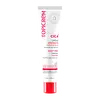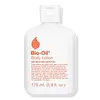What's inside
What's inside
 Key Ingredients
Key Ingredients

 Benefits
Benefits

 Concerns
Concerns

 Ingredients Side-by-side
Ingredients Side-by-side

Water
Skin ConditioningParaffinum Liquidum
EmollientGlycerin
HumectantHydrogenated Polydecene
EmollientPolyglyceryl-3 Diisostearate
EmulsifyingTalc
AbrasiveCera Alba
EmollientHydrogenated Castor Oil
EmollientGlyceryl Behenate
EmollientCopper Gluconate
Skin ConditioningZinc Gluconate
Skin ConditioningManganese Gluconate
Skin ConditioningBisabolol
MaskingSodium Hyaluronate
HumectantMagnesium Sulfate
Chlorphenesin
AntimicrobialSodium Hydroxide
BufferingWater
Skin ConditioningDimethicone
EmollientIsopropyl Palmitate
EmollientEthylhexyl Cocoate
EmollientIsododecane
EmollientIsopropyl Myristate
EmollientUrea
BufferingPolyglyceryl-2 Dipolyhydroxystearate
Skin ConditioningGlycerin
HumectantPentylene Glycol
Skin ConditioningDicaprylyl Carbonate
EmollientPolyglyceryl-3 Diisostearate
EmulsifyingSodium Lactate
BufferingDipentaerythrityl Hexacaprylate/Hexacaprate
EmulsifyingGluconolactone
Skin ConditioningRosa Canina Fruit Oil
EmollientSimmondsia Chinensis Seed Oil
EmollientCalendula Officinalis Extract
Skin ConditioningButyrospermum Parkii Oil
EmollientHelianthus Annuus Seed Oil
EmollientGlycine Soja Oil
EmollientIsostearyl Isostearate
EmollientBisabolol
MaskingOctyldodecyl PCA
EmollientRetinyl Palmitate
Skin ConditioningTocopheryl Acetate
AntioxidantLinoleic Acid
CleansingLinolenic Acid
CleansingTocopherol
AntioxidantSodium PCA
HumectantSodium Hyaluronate
HumectantLactic Acid
BufferingStearalkonium Hectorite
Gel FormingPropylene Carbonate
SolventWater, Dimethicone, Isopropyl Palmitate, Ethylhexyl Cocoate, Isododecane, Isopropyl Myristate, Urea, Polyglyceryl-2 Dipolyhydroxystearate, Glycerin, Pentylene Glycol, Dicaprylyl Carbonate, Polyglyceryl-3 Diisostearate, Sodium Lactate, Dipentaerythrityl Hexacaprylate/Hexacaprate, Gluconolactone, Rosa Canina Fruit Oil, Simmondsia Chinensis Seed Oil, Calendula Officinalis Extract, Butyrospermum Parkii Oil, Helianthus Annuus Seed Oil, Glycine Soja Oil, Isostearyl Isostearate, Bisabolol, Octyldodecyl PCA, Retinyl Palmitate, Tocopheryl Acetate, Linoleic Acid, Linolenic Acid, Tocopherol, Sodium PCA, Sodium Hyaluronate, Lactic Acid, Stearalkonium Hectorite, Propylene Carbonate
 Reviews
Reviews

Ingredients Explained
These ingredients are found in both products.
Ingredients higher up in an ingredient list are typically present in a larger amount.
Bisabolol is famous for its skin soothing properties. It does this by blocking inflammatory signals, helping to reduce your body's reaction to irritation.
This ingredient also interferes with the process of hyperpigmentation. This can help with reducing dark spots and uneven tone.
Bisabolol is an antioxidant. Antioxidants help fight free-radicals. Free-radicals are molecules that may damage your skin cells. By fighting these free-radicals, Bisabolol may slow down signs of aging.
Studies have shown Bisabolol to have antimicrobial properties and may be a fungicide. These properties help preserve a product's shelf life.
All these properties makes bisabolol a great skin barrier helper ingredient.
Bisabolol also helps the absorption of other ingredients.
Note: Synthetic Bisabolol has been shown to be less effective.
Learn more about BisabololGlycerin is already naturally found in your skin. It helps moisturize and protect your skin.
A study from 2016 found glycerin to be more effective as a humectant than AHAs and hyaluronic acid.
As a humectant, it helps the skin stay hydrated by pulling moisture to your skin. The low molecular weight of glycerin allows it to pull moisture into the deeper layers of your skin.
Hydrated skin improves your skin barrier; Your skin barrier helps protect against irritants and bacteria.
Glycerin has also been found to have antimicrobial and antiviral properties. Due to these properties, glycerin is often used in wound and burn treatments.
In cosmetics, glycerin is usually derived from plants such as soybean or palm. However, it can also be sourced from animals, such as tallow or animal fat.
This ingredient is organic, colorless, odorless, and non-toxic.
Glycerin is the name for this ingredient in American English. British English uses Glycerol/Glycerine.
Learn more about GlycerinPolyglyceryl-3 Diisostearate is an emulsifer and emollient. It comes from Isostearic Acid and Polyglycerin-3.
As an emulsifier, it helps stabilize products by preventing oils and water from separating.
This ingredient may not be Malassezia folliculitis, or fungal acne safe.
Learn more about Polyglyceryl-3 DiisostearateSodium Hyaluronate is hyaluronic acid's salt form. It is commonly derived from the sodium salt of hyaluronic acid.
Like hyaluronic acid, it is great at holding water and acts as a humectant. This makes it a great skin hydrating ingredient.
Sodium Hyaluronate is naturally occurring in our bodies and is mostly found in eye fluid and joints.
These are some other common types of Hyaluronic Acid:
Learn more about Sodium HyaluronateWater. It's the most common cosmetic ingredient of all. You'll usually see it at the top of ingredient lists, meaning that it makes up the largest part of the product.
So why is it so popular? Water most often acts as a solvent - this means that it helps dissolve other ingredients into the formulation.
You'll also recognize water as that liquid we all need to stay alive. If you see this, drink a glass of water. Stay hydrated!
Learn more about Water